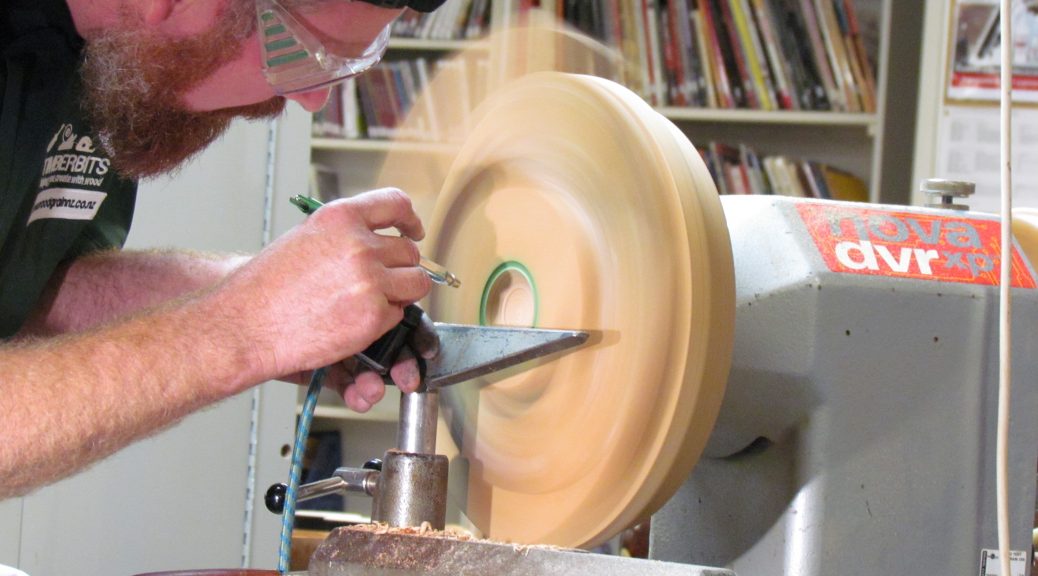David Gillard started the demo with a simple round and brown adapting his tall frame to this lower-level lathe he quickly roughed out around brown object d’art – commonly known as a cylinder, and dispatched to the nearest bin.
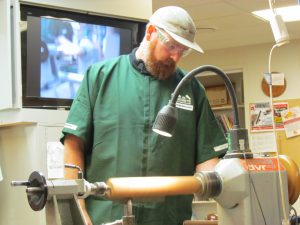
The focus of the demo was to illustrate the basics of a Nick Agar style. The exercise is a cleverly disguised piece of offset and multiple axis turning. David had prepared a jig with three blocks glued to the central plate.
The key plate holds the three blocks that will form the final work. The work holding plate is fixed to a primary faceplate was standard tech screws. Be safe with fastening, you can always use more screws.
Slow lathe speeds allow for quick change of plate set up and change of radii. On smaller works allows for running the work without significant balancing requirements. Also, there is always the aspect of safety.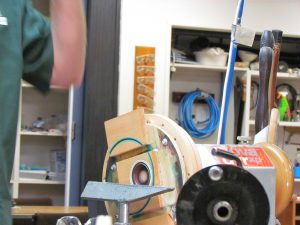
Simple safety comments were always at the forefront:
- Low lathe speed to start with (200 400 rpm).
- Ensure you’re aware of the blocks sticking out
- Spin the object after every change to the equipment settings.
Once a focal point has been started, sanded, painted in primary colour with any additional features, the additional lines can be produced by altering the placement of this plate. The simple jig allows for easy change of focal point and the addition of new features on a variety of radii.
Yes, planning is useful. Dave suggests working from a primary focal point and developing your design away from this point. There are always options. This is something that Dave stressed throughout the demonstration. The basis is found through experiment and practice and as Dave puts it: “having a good play”.
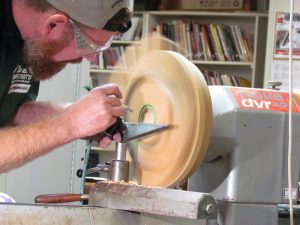
The colour is added by way of airbrush. The application is according to the direction of the design and focus of the particular element. Dave urged people to keep it simple and experiment. There are a lot of options including depth and width of cut, shape of the cut or line, amount of colour and/or colour combinations.
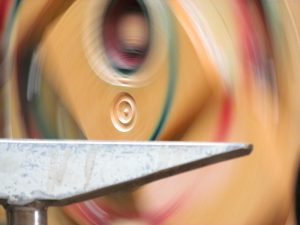
Dave used standard airbrush techniques for colouring and painting. Again, the application of colour highlighted the myriad options are available and the wide range of experiments that can be taken up in a fun and positive learning manner.
The overall package is up to the Turner.
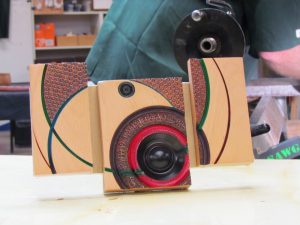
The challenges there to apply. These are all standard techniques: off Centre turning, multi-axis turning, faceplate turning, faceplate cutting techniques, V groove cutting, coving and beading, texturing, and so much more
(Graeme Mackay)
